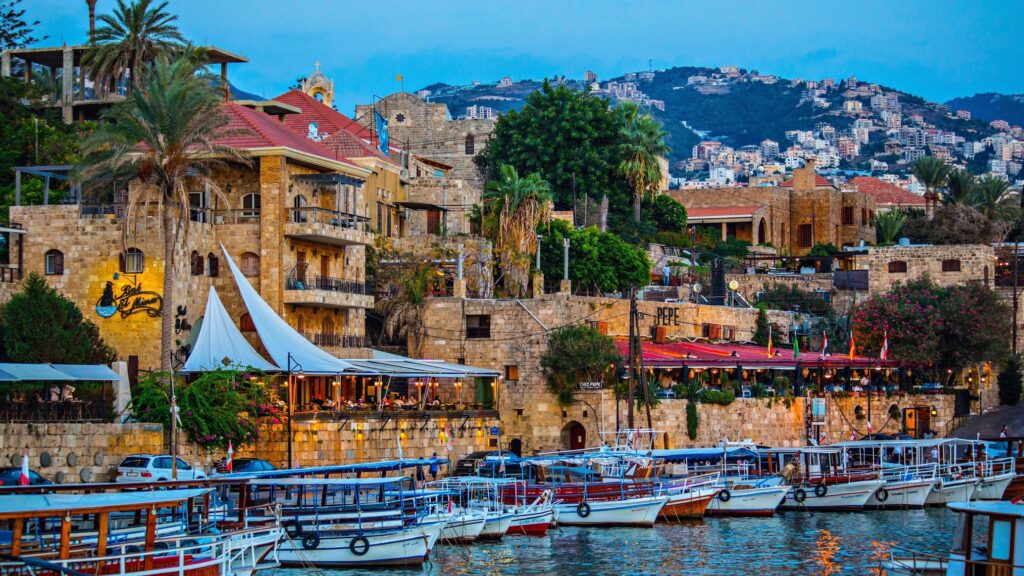Discover Lebanon: The Hidden Gem of the Middle East
Estimated reading time: 15 minutes
Key Takeaways
- Explore vibrant coastal cities such as Beirut, Byblos, and Tyre.
- Learn about Lebanon’s rich heritage, including Baalbek and the Ancient Site of Byblos.
- Indulge in famous Lebanese cuisine with dishes like tabbouleh, hummus, and shawarma.
- Immerse yourself in the unique culture of Lebanon, a blend of tradition and modernity.
- Find practical travel tips to prepare for your trip to Lebanon.
Table of Contents
Welcome, dear explorers and seekers of new journeys, to the adventure of discovering Lebanon – the hidden gem of the Middle East. As NuhairaVoyage, I always believe that every trip is a story, and Lebanon is truly a colorful epic.
Travel to Lebanon: a captivating destination where the beauty of the Mediterranean harmonizes with ancient history, vibrant cuisine, and a dynamic culture. This small yet alluring country promises unforgettable travel experiences, from sun-kissed coasts to thousands-of-years-old historical sites. In this comprehensive guide, we will journey together through charming coastal cities, learn about its rich heritage, savor world-renowned culinary flavors, and immerse ourselves in the unique culture of this nation. Join me, NuhairaVoyage, to discover why Beirut and other destinations in Lebanon are so powerfully attractive, and equip yourself with the most practical travel tips to turn your trip into a worthwhile adventure.
Discover Beirut, the Coastal City
Lebanon’s coast is like a soft silk ribbon embracing the Mediterranean, where vibrant cities coexist with ancient beauty. Each coastal city has its own charm, but all share a lively energy, picturesque promenades, and a unique blend of the old and the new.
One cannot fail to mention Beirut, Lebanon’s energetic capital. It is like a beating heart, bustling with vibrant nightlife, diverse art, and crowded seaside cafes. Beirut offers a unique cosmopolitan urban atmosphere along the Mediterranean coast, leaving anyone amazed by its glamour and strong recovery after the ups and downs of history. Strolling through its streets, you will feel the subtle blend of modern architecture and remnants of the past, creating a vibrant and captivating urban landscape.
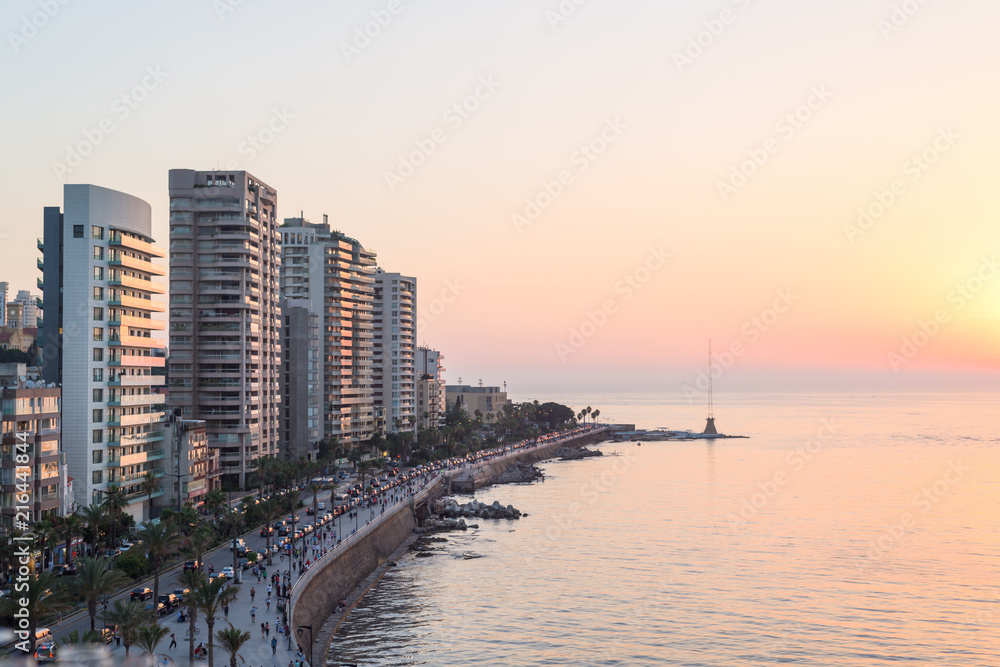
Further north, we find Byblos (locally known as Jbeil) – a true historical treasure. It is known as one of the oldest continuously inhabited cities in the world, with a history spanning over 8,000 years. Stepping into Byblos, I felt as if I was walking back in time. The ancient port with fishing boats anchored, the winding stone-paved ancient markets (souks), and charming seaside restaurants create a romantic and nostalgic atmosphere. Strolling through the narrow alleys of Byblos, you will encounter historical stories told through each stone, each wall, an experience not to be missed when exploring the ancient site of Byblos. According to information from Viator, this is a destination that is not only beautiful but also rich in historical and cultural value, a living testament to the endurance of the Phoenician civilization.
And let’s not forget Tyre (also known as Sour) in the South. This city is famous for its family-friendly public beaches, soft sand, and ancient Roman ruins located nearby. I often tell my friends that Tyre offers a perfect combination of relaxation and exploration. You can spend the morning swimming in the clear blue water, and the afternoon wandering among the magnificent historical ruins. Bashir Choucair, a reliable source of information about tourism in Lebanon, also confirms that Tyre is an excellent choice for those seeking both natural beauty and historical significance.
Along the entire coast of Lebanon, visitors can relax on beautiful beaches, enjoy fresh seafood just caught, and participate in exciting water activities such as kayaking and diving to explore the rich marine ecosystem. From the lively beaches in Beirut to the more secluded coves in the North, the Lebanese coast always welcomes you with endless beauty and unforgettable experiences.
Ancient Site of Byblos: A Journey Back in Time
Lebanon, despite its modest size, possesses an incredibly rich historical and cultural heritage, clearly demonstrated through countless ancient ruins and UNESCO World Heritage Sites. For me, exploring this heritage is not just about admiring architectural structures but also a journey of connecting with the civilizations that have shaped the world we live in today.
Most prominent is perhaps Baalbek, one of the largest and most impressive Roman temple complexes in the world. With its towering giant Corinthian columns, Baalbek is a living testament to the unique blend of Roman and Eastern influences. Standing among these magnificent ruins, I was simply overwhelmed by the scale and construction techniques of the ancient Romans. According to Tripadvisor and Viator, this is a must-visit destination where you can visualize the grandeur of an empire that once existed. The temples of Jupiter, Bacchus, and Venus here are architectural masterpieces; every stone, every column tells a story of power, belief, and human ingenuity.
The city of Tyre, which we mentioned earlier, is also a UNESCO World Heritage Site, preserving the ruins of Phoenician, Roman, and Byzantine civilizations. Walking through the ancient streets of Tyre, you will feel the historical diversity present in every layer of stone. The ruins of the Roman amphitheater, the paved streets, and the public baths are all living testimonies to the city’s illustrious past.
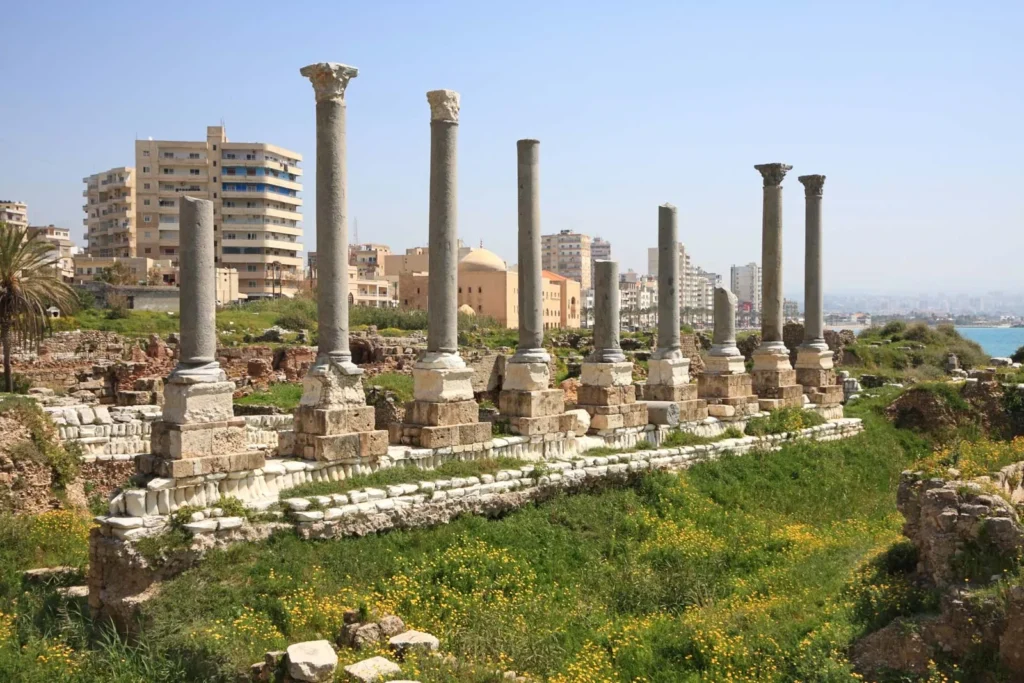
And we cannot fail to mention Byblos again, another precious gem of Lebanon’s heritage. From the remnants of the Phoenicians, who invented the alphabet, to Crusader-era castles, Byblos carries layers of history, allowing visitors to turn the pages of the past simply by walking on its ancient streets. I spent hours wandering through the old souk, imagining the Phoenician merchants who traded here thousands of years ago. Byblos, according to Viator, is a “living museum” of history, a destination that is not only architecturally fascinating but also deeply culturally significant.
To understand the country’s heritage more deeply, the National Museum of Beirut is an ideal stop. It displays thousands of archaeological artifacts, from prehistoric times to the Ottoman era, offering a panoramic view of Lebanon’s long history. Furthermore, the ancient markets (souks) in Byblos are also places that clearly showcase the country’s deep cultural heritage, where traditions continue to be preserved through many generations. But Lebanon is not just about historical sites; the country also boasts beautiful natural wonders. Jeita Grotto is a prime example, with its magnificent limestone caves and underground river. According to Tripadvisor, this is a wonderful attraction, offering an interesting contrast between the wild beauty of nature and the sophistication of historical sites.
Flavors of Lebanese Cuisine
If you are a food lover, then Lebanese cuisine will surely enchant you. Lebanese cuisine is celebrated worldwide for its vibrant flavors and rich diversity. For me, every Lebanese dish is not just a meal but a story, an invitation to the culture and traditions of this country.
When you set foot in Lebanon, there are some dishes you absolutely must try. First is tabbouleh, a refreshing salad made from herbs and bulgur wheat, with a light and lively flavor. Next is creamy smooth hummus, a familiar side dish made from chickpeas, tahini, and lemon, perfect to enjoy with warm pita bread. And don’t forget rich and smoky baba ganoush, made from mashed grilled eggplant, offering a unique taste experience. For meat lovers, shawarma is an unmissable choice, with meat slow-roasted on a spit and thinly sliced, wrapped in flatbread with vegetables and sauce. Bashir Choucair emphasizes that these are core dishes, defining the identity of Lebanese cuisine.
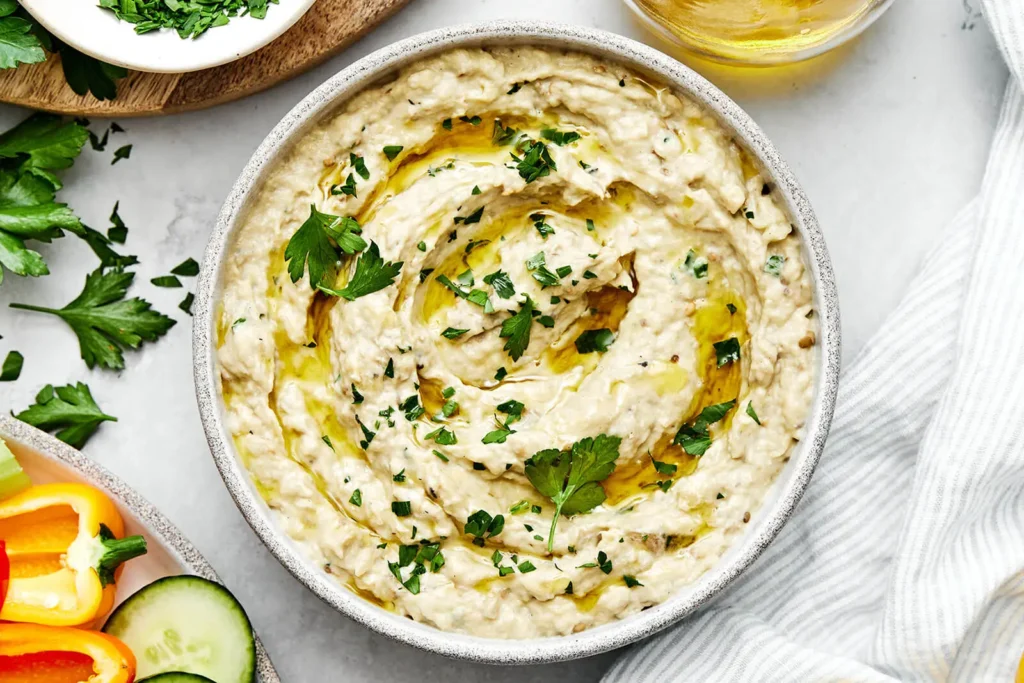
Mezze platters, or mezze plates, are a characteristic Lebanese dining style and an essential part of local meals. These are small plates filled with a variety of appetizers such as grilled meats, fresh crispy salads, and various dips. Mezze is not just a meal but a communal experience, where people share and enjoy the rich flavors together. Sitting around a mezze table, you will feel the warmth and hospitality of the Lebanese people.
Besides traditional restaurant dishes, don’t miss the opportunity to explore Lebanese street food. You can try manakish, a type of flatbread topped with za’atar (a characteristic spice blend) or cheese, often eaten for breakfast. Or crispy falafel made from mashed chickpeas, a delicious and popular vegetarian dish. Along the coast, you will find countless eateries serving fresh seafood, from grilled fish to crispy fried shrimp, offering the characteristic flavors of the sea. Whether you are looking for luxurious restaurants or vibrant street food stalls, cities like Beirut, Byblos, and Tyre can satisfy every palate, offering a memorable culinary journey for every visitor.

Lebanese Culture and Customs
Lebanese culture is like an intricately woven tapestry, vibrant and diverse, shaped by centuries of interaction between East and West. This cultural fusion has created a unique identity, reflected in every aspect of social life. When I set foot in Lebanon, I felt as if I was entering a world where tradition and modernity harmoniously blend, creating an irresistible appeal. Even when you explore the rural beauty of the country, like the Bekaa Valley famous for its vineyards and ancient ruins, you will clearly see this cultural diversity permeating every corner of life.
One of the most noticeable characteristics in the daily life of the Lebanese people is their traditional customs. The vibrant markets (souks) are where you can witness local life unfolding with full color and sound. Family gatherings, whether a simple meal or a large celebration, are important events, demonstrating strong bonds and deep affection within the community. These moments clearly showed me the warmth and closeness of the people here.

Lebanese hospitality is legendary. Visitors are always warmly welcomed, not only in hotels and restaurants but also in the homes of the local people. I have experienced this generosity many times, from a quick coffee invitation on the street to a sumptuous meal shared with a family. This is one of the most outstanding characteristics of Lebanon, leaving a deep and lasting impression on the heart of every visitor. This hospitality is not just an action but a philosophy of life, reflecting the respect and affection that the Lebanese people have for their guests.
Lebanon is home to many diverse religious communities, and this further enriches the country’s cultural landscape. This diversity is clearly shown through the vibrant festivals held throughout the year. From contemporary music and art events in Beirut to deeply historical celebrations in mountain villages, each festival has its own color, reflecting the traditions and beliefs of different communities. You can encounter solemn religious festivals, traditional music performances, or modern art exhibitions, all contributing to a multi-dimensional and vibrant cultural space. Participating in one of these festivals is a great way to understand the soul and spirit of the Lebanese people more deeply.
Travel Tips for Beirut and Byblos
To have a complete and memorable trip to Lebanon, grasping some practical travel tips is extremely important. As someone who has experienced many trips, I want to share helpful advice so you can make the most of your journey.
Ideal time to visit: Based on my experience and that of many travel experts, spring (April – May) and autumn (September – November) are the best times to visit Lebanon. The weather during these months is ideal for visiting historical sites, exploring cities, and engaging in outdoor activities. The temperature is pleasant, not too hot like in the summer and not too cold like in the winter, allowing you to comfortably experience everything this country has to offer.
Visa requirements: Most travelers need a visa to enter Lebanon. However, the good news is that citizens of many countries can obtain a visa upon arrival at the airport. Nevertheless, I always recommend checking the latest visa requirements carefully before departure. Regulations can change, and preparing in advance will help you avoid unnecessary hassles at the border. Please contact the Lebanese embassy or consulate in your country for the most accurate information.
Safety tips for travel: Although Lebanon offers wonderful travel experiences, visitors need to stay updated on the current situation and adhere to local advice, especially when traveling in certain areas. I recommend following the news, registering your information with your country’s embassy, and always having a backup plan. Caution and understanding of local culture will help make your trip safe and smooth.
Getting around in Lebanon: Lebanon is a relatively small country, which makes exploration much easier. You can travel conveniently by car or taxi. However, the public transportation system is quite limited. Therefore, to have maximum flexibility and discover hidden gems, arranging local tours or hiring a private car are excellent options. This allows you to freely plan your itinerary, from short day trips to deeper explorations of rural areas.
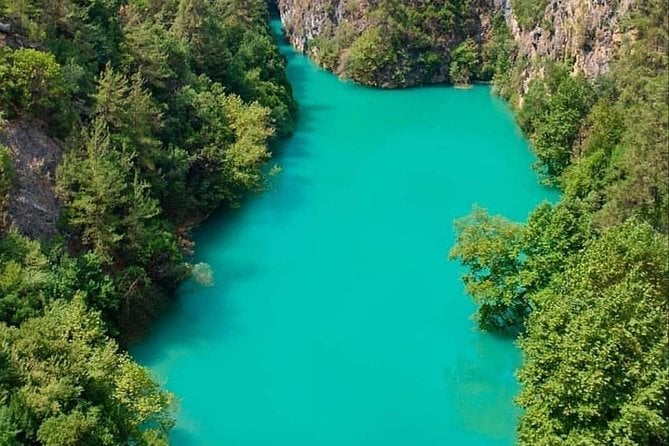
Insider tips: Based on my personal experience, I recommend starting your journey in Beirut. This city will enchant you with its vibrant nightlife, modern restaurants, and countless hidden historical and cultural sites. After soaking up the modern atmosphere of the capital, head to Byblos to immerse yourself in ancient heritage. Byblos, with its ancient port and historical souk, will transport you back in time and let you feel the flow of history. For beach lovers, Tyre is an unmissable destination with beautiful beaches where you can relax and enjoy the warm water. And if you are a nature lover, spend time on an adventure at Chouwen Blue Lagoon – a hidden gem with crystal clear turquoise water, an ideal place for swimming and immersing yourself in wild nature. Bashir Choucair also agrees that combining these destinations will provide a diverse and rich experience.
Conclusion
As our journey of discovering Lebanon comes to a close, I hope you have felt the special charm of this country. Lebanon is truly a magical land, where the sparkling Mediterranean coast meets magnificent ancient ruins, rich culinary flavors, and a diverse cultural tapestry. From the vibrant streets of Beirut and the historical grace of the ancient site of Byblos, to the peaceful beaches of Tyre and the splendor of Baalbek, this country promises diverse and memorable experiences.
I believe that every trip is not just about the places you visit, but also about the connections you make and the stories you bring back. Lebanon has left and continues to leave an indelible mark on my heart, with the warm hospitality and resilient spirit of its people.
Start your own journey to explore Lebanon’s coastal cities, delve into its unique heritage, savor its distinctive culinary flavors, and connect with the warm people here. Your adventure awaits! Consider planning your trip or exploring further to discover all that Lebanon has to offer. I believe you will not be disappointed by the diversity and beauty of this country. And if you happen to pass through the Bekaa Valley, don’t forget to explore the fertile vineyards and ancient agricultural heritage, an integral part of Lebanon’s cultural landscape.
See more:
DIY Saudi Arabia Travel: Detailed Guide A-Z
DIY Egypt Travel Guide: Costs & Detailed Itinerary
DIY Dubai Travel: Comprehensive Guide A-Z

